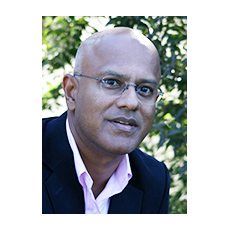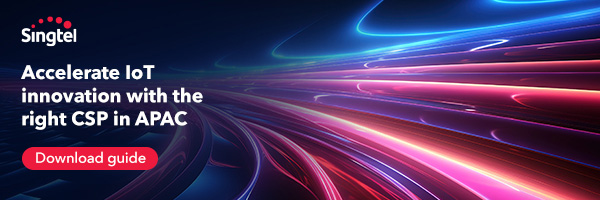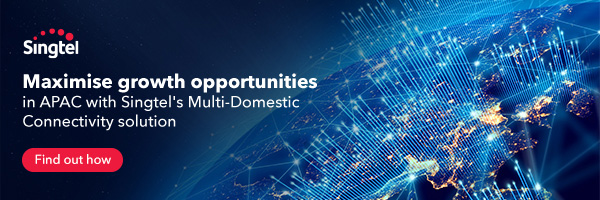
Two investment themes bookended 2023. In January, the European Union backed a $100m venture capital fund, managed by Momenta Partners. In December, Softbank announced its EUR473m ($514m) investment for a 51% stake in Cubic Telecom. This development more than drew the eye as exemplified by the analyst commentary around the high (16x) revenue to implied enterprise value multiple.
In between, the level of corporate activity in the IoT sector continued at roughly the same pace in prior years, albeit down on the years of heightened activity going back five or so years ago. There were several developments among the vendor and network operator communities, but less so among the IoT platform providers. Governments became more active with an emphasis on security and protections for the consumer sector.
Against the backdrop of 5G developments and 6G pathfinding, IoT is becoming a part of the fabric of enterprise operations and national infrastructure. Established players continue to emphasize connectivity, a relatively small portion of IoT value chains, while enterprises focus on quick-to-market solutions enabled by cloud providers and systems integrators. Both approaches risk leaving ‘system of systems’ issues for later consideration.
Investment Splash
As announced, the European Union’s VC funding effort targets Industry 5.0 or, “Industry 4.0 with-a-conscience” prospects because the Industry 4.0 movement is perceived to be overly tech-focused, and one that has failed to prioritise people and the planet. Consumer protection and sustainability are themes that reappear in other developments covered by this review.
SoftBank’s stake in Cubic Telecom drew attention for its high multiples and am implied valuation of over EUR900m for Cubic Telecom. This is a business that raised $124m over a period of some ten years. After beginning life as a company offering an over-the-air software management for M2M applications, it switched to explore the connected car space (working with Tele2) around 2014. An EUR18m investment from Audi and Qualcomm followed in 2015. SoftBank’s investment rationale into Cubic Telecom is to pioneer the future of software-defined connected vehicles. This does not look like an IoT connectivity deal given SoftBank’s 2022 equity investment into 1NCE, the latter being characterised as “the only company that can deliver global IoT”.
One insight on SoftBank’s investment can be gleaned from an even larger IoT investment from several years ago. In 2016, Cisco invested US1.4bn to acquire Jasper Wireless. Compared to Cubic Telecom, Jasper had raised a cumulative investment of $205 million over seven rounds. At the time, Cisco’s acquisition provided it with an entry point into the IoT sector as well as a channel comprising some 3,500 customers including big names such as Ford, GM, Heineken, and Boston Scientific. The acquisition seems to have helped Cisco over subsequent months as it brokered IoT deals with SalesForce.com, IBM and several mobile network operators internationally. Whether SoftBank can achieve the same market gains with Cubic Telecom remains to be seen.
With over 90% of Cubic Telecom’s revenues concentrated in Volkswagen Group, there remains a challenge to diversify the customer base. Of course, SoftBank’s relationships might help with Japanese vehicle manufacturers. This will take time and a greater investment in resources and coalition building. There should also be scope for product and service innovation involving connected car, intelligent transport, and electric vehicle charging systems. It’s worth noting that several months after its Jasper Wireless acquisition, Cisco’s continued foray into the IoT sector led to an additional $3.7bn acquisition of AppDynamics which was active in application performance monitoring, end-user monitoring and infrastructure visibility. Expanding the addressable market might be one factor in SoftBank’s investment calculus.
Incumbents’ Dynamics
Across network operators, connectivity platforms and vendors, the sharpest rise in corporate initiatives points to the ways in which vendors are trying to ease adoption and reduce the friction of developing solutions. For example, ST Microelectronics wants to make it easier to connect devices to cloud providers. It now offers microcontroller software and developer tools targeting Microsoft’s Azure IoT Hub and AWS cloud. ST Microelectronics also partnered with CommScope to integrate the latter’s PKIWorks IoT security platforms to align with align with the Connectivity Standards Alliance’s Matter standard. Making adoption easy applies to another strategic incumbent, Qualcomm. It launched a new platform called Qualcomm Aware comprising Qualcomm silicon and an ecosystem of hardware and software partners all wrapped in a cloud-friendly bundle to simplify the process of “getting into the IoT game”.
Mobile and low-power network operators continued at about the same level of corporate activity as 2022 with two themes apparent. One involved the launch of solutions for distinct verticals. In the utilities sector, for example, Vodafone launched its Water Metering solution for water management companies. Also targeting the water sector, UnaBiz (formerly SigFox) entered into a strategic partnership with KAIFA, a utility sector business digitalisation solution provider. In Australia, Telstra launched an end-to-end industrial automation capability, following its acquisition of industrial IoT providers Aqura Technologies and Alliance Automation. AT&T, one of the forerunners of the IoT industry even decided to relaunch its old “Connected Solutions” business unit. Beginning with connected cars, it wants to help customers navigate the 5G and IoT, by putting dedicated technology and sales executives alongside each other instead of separating them across different AT&T units.
The other theme involved horizontal, or extended connectivity, initiatives. Some of these combined licensed and unlicensed terrestrial network providers (e.g., Bouygues with Netmore Group, UnaBiz with The Things Industries to interwork SigFox and LoRa technologies). Others involved the combination of terrestrial and satellite communications means (e.g., Sateliot with Transatel, Skylo with Telefonica, EchoStar with the Things Industries and, Intelsat with Deutsche Telekom).
Platform providers were less in evidence as far as corporate initiatives are concerned. A marketing report by Analysys Mason for floLive, one of several to publish on eSIM and iSIM developments, suggested industry motivations are driven by a strategy of embedding connectivity earlier in the IoT value chain. For 2023, the requirements associated with this industry change, focused on flexible connectivity, outweighed M&A and platform innovation developments.
Government’s Growing Role
As the sector grows, IoT offerings are starting to expose externalities that purely market-based systems are not geared up to address. That is one explanation for the EU getting involved in VC funding for people and planet issues as noted earlier. In Scotland, the government sees the nation as expanding in a global market valued at $600bn. The country is investing in an innovation hub targeting IoT and related technologies such as sensing and imaging to help Scottish businesses explore opportunities “presented through advanced digital technologies”.
Cybersecurity and consumer protection are other areas where governments can address adverse externalities and set a positive path forward through regulatory and certification measures. For example, the UK government is enacting regulations for Security Requirements for Relevant Connectable Products targeting password management, vulnerability disclosures and software update support. In the USA, the Biden-Harris Administration announced a cybersecurity certification and labelling program via a “U.S. Cyber Trust Mark” to help consumers choose among smart devices that are safer and less vulnerable to cyberattacks. In Asia, the governments of Singapore and South Korea launched an initiative to develop a mutual recognition of IoT security certification schemes. These developments expose market gaps that individual companies and industry alliances are ill-positioned or unwilling to address.
Watching the Horizon
Whether they are labelled opportunities or challenges, other market gaps will shape the IoT industry over 2024 and beyond. Professional media sites such as LinkedIn and Medium are starting to fill up with individuals offering their IoT implementation services, a sure sign that supply and demand are rising up a notch.
Connectivity continues to dominate. To borrow a 1990’s marketing phrase that was commonly applied to sell the commercial Internet, connectivity is analogous to the ‘on-ramp’ for the IoT. However, connectivity represents one of a growing number of elements that contribute to an IoT solution. As the population of connected devices grows it will require both a structured framework and a suite of management services to interoperate at scale. This might emerge as the communications and cloud industries converge on 3GPP planning and a shift in emphasis to massive machine type (mMTC) use cases.
Governments and society are coming to terms that easy access to the Internet results in an asymmetric relationship between users and infrastructure and application providers. As an illustration of the challenges ahead, the Matter protocol set out to make connectivity simple and straightforward for consumers. While homeowners can mix and match devices from a growing ecosystem of suppliers, they still have to choose a home platform for management functions. This element, sitting above the connectivity layer seems to be dysfunctional and not just in a technical sense. As one reviewer put it, “now that Matter is here, these companies are wholly unmotivated to ensure their platforms work well with their direct competitors”. This is an appealing business scenario for system integrators and large platform (or ‘gatekeepers’ in competition law terminology) providers. The supply side of the industry will need to address issues of security, interoperability, certification and possibly data rights now that the wheels of government are rolling.
Another facet of the connectivity discussion is about interworking. How will deployments in large spaces function when they combine wide-area (cellular, satellite) and short-range devices (Bluetooth, Wi-Fi, Zigbee)? Edge computing concepts are applicable so that gateways aggregate short-range connectivity devices, for example. However, there is still a need for additional functionality to provide oversight and management functions and to make these capabilities appealing to developer communities. This dynamic will persist as the number of connected devices grows because many of these will be constrained by factors such as their energy envelope, power budget and sleep-modes of operation. Expect to see an extension of GSMA and TMForum efforts to define APIs that make intelligent management functions accessible to IoT system operators and developers.
A final observation relates to the scope of IoT. Many associate the term with connectivity and connected devices, as if connectivity is the biggest hurdle to overcome. Business users have progressed beyond connectivity and are increasingly adding IoT data management and remote-control capabilities as they deploy solutions for priority or business-critical use cases. Over the longer term, however, users will need to view IoT through a ‘system of systems’ lens. There will be situations that require cross-silo interoperability involving multiple IoT solutions and service providers working together. In addition to business model innovation, the technical challenges associated with improved decision-making will rely on making IoT work with digital twins as well as AI and ML algorithms in a systematic way. Today’s quick and easy solution is to concentrate IoT data in a cloud environment where all processing, intelligence and reporting are centralized. However, quite apart from ceding value to the cloud provider, there will be longer-term requirements for data provenance tracking and causal reasoning that call for bi-directional data flows. The proliferation of constrained IoT devices will call for edge processing and the coordination of distributed information processing and intelligence. These are reasons why notions of IoT connectivity and solutions, in multi-stakeholder settings, need to embrace system of systems approaches.







